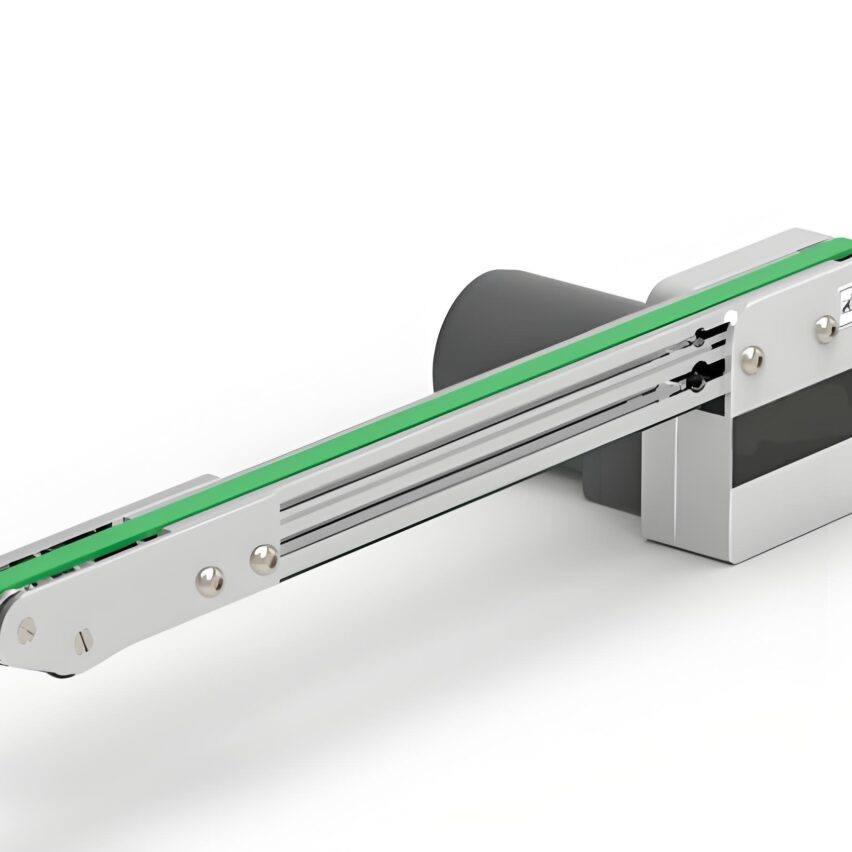As the core infrastructure of modern manufacturing industry, the technological evolution of flat conveyor line directly determines the production efficiency and competitiveness. 2025, under the dual drive of Industry 4.0 and carbon neutral target, intelligent upgrading has become an irreversible trend in the industry. According to market forecasts, the global flat conveyor line market size will exceed USD XX billion in 2025, of which the intelligent penetration rate will exceed XX%. This change not only reshapes the production process, but also through the Internet of Things, artificial intelligence and other technologies in-depth integration, to solve the traditional conveyor system of high energy consumption, low flexibility and other pain points, for the manufacturing industry to inject new momentum. The following is an analysis of the core of this technology wave from the perspective of a three-dimensional Q&A matrix.
Foundational dimensions: nature of technology and drivers of change
The core of intelligent upgrading is to achieve self-optimisation of the conveyor system through data-driven. Its technical architecture consists of three layers: perception layer (integrated RFID, vision sensors real-time collection of material location and equipment status), analysis layer (AI algorithms to process the data flow to predict failures or optimise paths), and execution layer (linkage of robotic arms or variable frequency motors to automatically adjust operating parameters). This architecture enables the conveyor line to shift from passive transmission to active decision-making. For example, after integrating the AI control system in an automotive factory, the assembly error was reduced to within 0.3mm, and the yield rate was increased by 12%. The core motivation to drive upgrading stems from the triple pressure: rising labour costs (annual increase of 8% in manufacturing labour costs), tightening of environmental protection policies (e.g. EU carbon tariffs forcing energy consumption to be reduced by XX%), and exploding demand for customisation (e-commerce small-volume orders account for more than 60%). If not embracing intelligence, enterprises will face the risk of lagging efficiency - traditional conveyor line failure downtime averages 120 hours per year, while intelligent systems can be reduced to less than 20 hours through predictive maintenance .
Scenario Dimension: Landing Path and Industry Practice
The penetration of intelligent technology presents differentiated industry paths. In the electronics manufacturing industry, high-precision positioning is in demand, such as a mobile phone assembly line using machine vision guidance conveyor system, through real-time image analysis to automatically correct the position of the PCB board, so that the placement efficiency of 180 pieces / minute, manpower demand reduced by 40%. Food processing industry focuses on hygiene and traceability, a dairy company embedded temperature sensors and blockchain nodes in the conveyor line to achieve full temperature control and traceability from filling to storage, and the response speed of the automatic alarm for non-compliance has been increased to within 5 seconds. Heavy-duty automotive scenarios rely on compression resistance and flexibility, and the speed chain system supports the rapid restructuring of production lines through modular design. A new-energy battery factory applied the system to compress the downtime of switching models from 8 hours to 45 minutes, but the chain gap needs to be cleaned every day to prevent the accumulation of grease and dirt. The three main ways to obtain technical solutions include: customisation by head manufacturers (e.g. ABB provides AIoT integration solutions), secondary development of open-source platforms (ROS system adapted to conveyor line control), and cooperation between industry, academia and research institutes (universities combine with enterprises to overcome material bottlenecks). If the implementation is not appropriate, it will lead to new problems: a logistics warehouse excessive pursuit of automation led to shaped parcels stuck, and then add adaptive side baffles to solve the sorting interruption .
Solution Dimension: Risk Avoidance and Effectiveness Leapfrogging
A systematic error correction mechanism is required to address the upgrade challenge. For the technical integration obstacles (e.g. incompatibility between traditional machinery and AI protocols), an edge computing gateway is used to achieve data format unification, and a case of an equipment factory shows that the debugging cycle is shortened by 70%. The contradiction in energy consumption is resolved through a dual-track strategy: the hardware side applies permanent magnet motors (saving 30% compared with asynchronous motors), and the software side deploys dynamic speed regulation algorithms - a photovoltaic panel production line automatically adjusts the conveyor speed according to the light intensity, with an annual power saving of 150,000 kWh. Talent gap needs to be filled ecologically: establishing an interdisciplinary training system (mechanical engineers learn Python data analysis), a company's operation and maintenance response efficiency increased by 50% after internal training. Cost-recovery model shows that intelligent investment has significant economic: the initial investment of 100m conveyor line equipped with IoT sensors is about 180,000 RMB, but it can pay back in 18 months by reducing downtime and energy consumption, and the five-year comprehensive ROI is more than 1,40%. On the contrary, if you stick to the traditional model, the enterprise will be squeezed by a double: energy efficiency disadvantage (intelligent line unit load energy consumption of 35%) and policy risk (not up to the ISO50001 energy efficiency standards face production rectification).
The intelligent upgrading of flat conveyor lines in 2025 has metamorphosed from a technical concept to a value engine. With the accelerated landing of 5G + edge computing (latency down to 1ms), and the popularity of green materials such as polyurethane conveyor belts (life extension of 20%), the industry will enter a new era of "self-awareness, self-decision-making and self-optimisation". Enterprises need to reconfigure the technology route with a dynamic vision: short-term focus on the integration of sensors and control systems, medium-term exploration of digital twins to preview production fluctuations, and long-term layout of the AI autonomous closed-loop ecology. The only way to seize the high ground in the efficiency revolution is to bite the depth of technological innovation and scene pain points.













